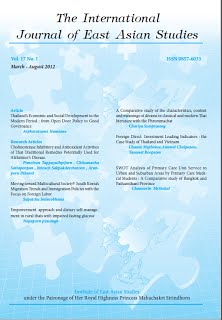A Comparative Study of the Characteristics, Content and Meanings of Dreams in Classical and Modern Thai Literature with the Phrommachat
คำสำคัญ:
Characteristic, contents and meanings, dreams, Thai literatureบทคัดย่อ
Background: Dreams are one of the oldest arts in the world and one that is crossdisciplinary
in nature. In Thai culture, the beliefs in the interpretation of dreams have been passed down from the beginning of the Ayutthaya period. With regard to the dream vision texts, the Thais often treated the text as a bed-side consultant. The study is based on literary sources. The oldest Thai text on this subject is the “Phrommachat”.
Objective: This research has three objectives: 1) To study about the characteristics of dreams; 2) To study the content and meanings of dreams; and 3) To compile the content, the interpretations, and the similarities of dreams.
Result: Dreams are a ‘Macro philosophy’ with f ive interdisciplinary groups that have dealt with dream concepts. As for the images and ideas occurring in the dreams and their interpretations, they can be categorized into six topics: 1) love affairs; 2) offspring and
pregnancy; 3) wars and politics; 4) holy objects, faith and omen; 5) causes of dreams, the
timing of dreams, and how to lessen or avoid disastrous events; and 6) Others. In reviewing
56 stories of classical and modern Thai literature, there are 25 dream stories in the classical
texts and 31 in the modern texts. The analysis of these stories illustrates some similarities and contrasts between the dream contents and their interpretations, with some items having 100 percent similarities to the interpretations given by the “Phrommachat” text.
In six literary stories, the dream interpretations show both similarities and contrasts. These are the “Ramayana” of King Rama I, the “SamKok” , the “Lilit Taleng Phai”, the “Rajatiraj”, the “Khun Chang, Khun Phaen” and the “Nee Lae Lok” . The contents of the dreams are interpreted differently. They are about parents, gods and goddesses, f ishing, as well as other objects. However, it was found that 22 dreams were not mentioned in the “Phrommachat” text.
Discussion and Conclusion: In modern times, the age of news and information has changed from the printed media to the social network. The spread of information on the interpretation of dreams has also expanded to the new media and the printed media. Due to fears of copyright infringement, a whole gamut of new interpretations has been conceived and thus it is diff icult to conclude which path is correct and retains accuracy; even when some of the interpretation is made by some of the more famous dream interpreters in modern times.



